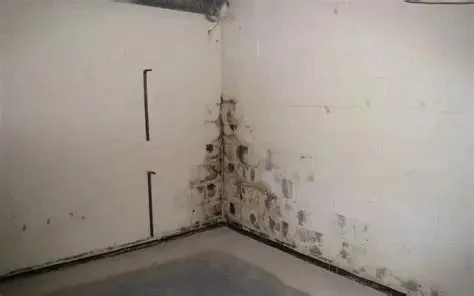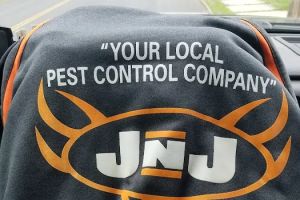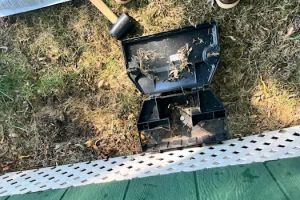
- 1. Why Prevent Pest Growth in Basements?
- 2. Common Pests Found in Basements
- 3. Steps to Prevent Pest Growth in Basements
- 4. Maintaining a Pest-Free Basement
- 5. Real-Life Case Study: Successful Basement Pest Prevention
- 6. Recommended Products for Basement Pest Control
1. Why Prevent Pest Growth in Basements?
Your basement is one of the most vulnerable areas in your home when it comes to pest infestations. Basements are typically dark, damp, and isolated, making them an ideal breeding ground for pests. If left unchecked, these pests can cause significant damage to your property, create health hazards, and lead to costly repairs.
Preventing pest growth in basements is essential not just for maintaining your home’s structural integrity but also for ensuring a safe and healthy living environment. Pest infestations in basements can lead to mold growth, deteriorating insulation, and even damage to electrical wiring. Furthermore, pests like rodents can find their way into other parts of your home, increasing the risk of a larger infestation.
2. Common Pests Found in Basements
Understanding the types of pests that typically invade basements can help you take the right preventive measures. Here are the most common pests found in basements:
2.1 Rodents
Rodents, particularly mice and rats, are common basement invaders. They are attracted to basements because of the shelter, food sources, and warmth. Rodents can chew through insulation, wires, and even structural components, causing costly damage. Additionally, they pose serious health risks through droppings and urine.
2.2 Cockroaches
Cockroaches are nocturnal creatures that thrive in dark, moist areas like basements. They feed on organic material and can contaminate food, spread bacteria, and trigger allergies. Cockroach infestations are not only unsightly but also harmful to your health.
2.3 Termites
Termites are a significant threat to basements, particularly if there is wooden structural framing. They feed on cellulose in wood, potentially causing extensive damage to the foundation and supports of your home. Early termite detection is key to preventing structural damage.
2.4 Spiders and Other Insects
Basements are also attractive to spiders and insects like ants, centipedes, and silverfish. While these pests may not cause structural damage, they can be a nuisance and can spread to other areas of the house if not controlled.
3. Steps to Prevent Pest Growth in Basements
There are several proactive steps you can take to prevent pest growth in your basement. Regular maintenance, sealing entry points, and implementing pest control solutions are key strategies in keeping pests at bay:
3.1 Seal All Gaps and Cracks
One of the most effective ways to prevent pests from entering your basement is to seal any gaps or cracks in the foundation, walls, and around pipes. Use a high-quality sealant or expanding foam to block these entry points. Pay special attention to areas around vents, windows, and doors, as these are common entryways for pests.
3.2 Control Moisture Levels
Moisture is a major attractant for pests. To prevent pest growth, it’s crucial to control the humidity levels in your basement. Consider installing a dehumidifier to keep moisture in check. You should also inspect for leaks in plumbing and repair any water-damaged areas to prevent excess moisture from accumulating.
3.3 Improve Ventilation
Good airflow is vital to prevent pest growth in your basement. Ensure that your basement has adequate ventilation to keep the space dry and discourage pests from making it their home. Installing a ventilation fan or ensuring existing vents are clear can improve air circulation and reduce humidity.
3.4 Regular Cleaning and Inspection
Regular cleaning is a simple yet effective step in keeping pests out of your basement. Remove clutter, food scraps, and organic materials that pests may feed on. Additionally, perform routine inspections to check for signs of pest activity, such as droppings, nests, or unusual odors. Early detection helps prevent a small issue from turning into a major infestation.
3.5 Use Pest Control Products
Using pest control products specifically designed for basements can help keep pests at bay. Insecticides, rodent traps, and bait stations can be strategically placed in areas where pests are most likely to enter. Natural repellents such as peppermint oil and diatomaceous earth can also be effective in deterring pests.
4. Maintaining a Pest-Free Basement
Once you’ve implemented the steps to prevent pest growth in your basement, it’s important to maintain those efforts over time. Consistent upkeep will ensure that your basement remains pest-free and that any potential problems are caught early:
4.1 Inspect Your Basement Regularly
Make it a habit to inspect your basement every few months, especially after seasonal changes or during periods of high humidity. This will help you catch any pest activity before it escalates.
4.2 Reapply Pest Treatments as Needed
Many pest control treatments, such as insecticides or rodent traps, lose their effectiveness over time. Be sure to reapply these products as recommended by the manufacturer, and replace traps or bait stations when necessary.
4.3 Keep the Area Dry
Moisture is a constant threat to pest prevention. If you notice any signs of water damage or high humidity, address the issue immediately by fixing leaks and maintaining a dry environment in your basement.
5. Real-Life Case Study: Successful Basement Pest Prevention
A homeowner in Pennsylvania faced recurring pest problems in their basement, including cockroaches and rodents. After using a combination of sealing cracks, installing a dehumidifier, and using natural repellents, the homeowner reported a significant decrease in pest activity. Regular inspections and maintenance helped keep the basement dry, pest-free, and safe. They also found that pest-proofing their basement contributed to a more energy-efficient home by improving air circulation and reducing moisture buildup.
6. Recommended Products for Basement Pest Control
To maintain a pest-free basement, here are some recommended products available at PestControlHub:
- Rodent Traps and Bait Stations: Effective in capturing mice and rats before they become a bigger problem.
- Dehumidifiers: Helps control moisture levels in your basement to prevent pest infestations.
- Insecticides: Use insecticides targeted for basements to eliminate crawling insects like cockroaches and ants.
- Sealants and Expanding Foam: Seal cracks and gaps around pipes, vents, and windows to keep pests out.
Visit PestControlHub for expert recommendations and to shop for the best products to keep your basement pest-free year-round.









 Wildlife Resolutions4.0 (443 reviews)
Wildlife Resolutions4.0 (443 reviews) Pest Marshals of Toledo5.0 (2 reviews)
Pest Marshals of Toledo5.0 (2 reviews) LS Rodent Proofing & Pest Control Service5.0 (4 reviews)
LS Rodent Proofing & Pest Control Service5.0 (4 reviews) Best Termite & Pest Control4.0 (16 reviews)
Best Termite & Pest Control4.0 (16 reviews) Varment Guard Wildlife Services5.0 (28 reviews)
Varment Guard Wildlife Services5.0 (28 reviews) Pestban Inc4.0 (394 reviews)
Pestban Inc4.0 (394 reviews) How to Use Monitors to Detect Pest Entry: A Comprehensive Guide
How to Use Monitors to Detect Pest Entry: A Comprehensive Guide How to Predict Which Pests Will Invade Next – Smart Pest Forecasting for the U.S.
How to Predict Which Pests Will Invade Next – Smart Pest Forecasting for the U.S. How to Conduct a Pest Risk Assessment at Home – Expert Guide
How to Conduct a Pest Risk Assessment at Home – Expert Guide How to Block Pest Entry Around Deck Joists: Effective Solutions
How to Block Pest Entry Around Deck Joists: Effective Solutions How to Safely Use Fumigation Methods: A Comprehensive Guide for Homeowners
How to Safely Use Fumigation Methods: A Comprehensive Guide for Homeowners Why Pests Are More Active After Rain: Understanding the Link Between Weather and Pest Behavior
Why Pests Are More Active After Rain: Understanding the Link Between Weather and Pest Behavior